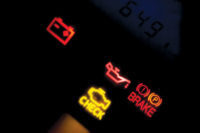Questions like this are all well and good but historical, often lagging indicator, data doesn’t tell a complete story. Absence of injuries doesn’t necessarily equate to working safely; it could merely indicate luck. Existence of safety programs doesn’t indicate adherence to those plans. A thorough vetting of contractor safety is needed to ensure they are actually working safely once they step foot onto your project site.
Once the subcontractor is selected, the next step is the pre-job safety meeting, which establishes the cultural norms and rules for the subcontractor project team as it relates to safety. These are sometimes known as “bobble-head” meetings because the general contractor usually recites the rules and the subcontractor nods vigorously in agreement. Often only the principal attends the meeting since field workers, such as the foreman, are off working at another project. As such, this information exchange can be lost in translation once work actually begins.
|
At this point, the general contractor is typically feeling good. A plan is in place and the subcontractor has agreed to it.
Unfortunately, once work begins, usually all bets are off and “subs” perform in the manner they see fit, often with a focus on productivity first and safety a distant second, if at all.
It can become a vicious game of ‘catch-the-contractor’ as the sub evades safety protocols and the general contractor tries to enforce them. Known as the “whack-a-mole” process, the general contractor goes out searching for safety infractions and writes out tickets like a cop on a beat. But unlike a speeding ticket, these citations often have no consequential effects. Nothing really changes unless one of two things occurs — an injury prompts transformative action or the subcontractor leaves the project. Once the subcontractor leaves the project, the cycle will repeat.
A look at leading indicators
So, how can you manage safety more effectively? Collecting leading indicators that can be tracked and trended is the next logical step. Following are some examples:
? Unsafe observations — Unsafe conditions and behaviors fall into this category. If a subcontractor fails to follow safety protocols, these instances are recorded and addressed through safety observations and inspections. However, unsafe observations provide an incomplete picture. Zero unsafe observations could mean the subcontractor was observed working safely. It could also indicate that the subcontractor was not observed at all. A “per inspection” metric is best such that contractors of varying size can be evaluated together.
• Safe observations — Safe observations provide an opportunity to capture positive conditions and behaviors. On average, there are about 30-35 safe observations for every unsafe observation. These observations are a great way to gain insight into whom and what was actually observed.
• Percent safe — This metric is simply a ratio of safe to unsafe observations. For example, 95 safe observations and 5 unsafe observations would equate to a 95% safe metric. This is a good long-term metric, especially at the category level (e.g. Fall Protection, PPE), but a relatively poor and misleading metric in the short-term. In addition, it is not a measure of risk. For example, if one contractor’s ratio is 85% safe and the other is 97% safe, which one is safer? At first glance, you would assume the one that is 97% safe. However, if you delve into the data, perhaps the unsafe observations related to the “safer” contractor were all life-threatening severity. Perhaps the contractor that was only 85% safe had relatively minor infractions such as administrative omissions. Always consider context and severity of unsafe observations.
• Severity — Failing to tie off at 20 feet is much different than failing to submit a toolbox talk for the week. Assigning a relative risk value to each unsafe observation will allow sorting of the observations such that “significant injury” and “fatality potential” can be more easily identified and addressed.
• Weighted percent safe — This combines all previously mentioned metrics into one comprehensive metric to better represent both the ratio of safe and unsafe observations, as well as the severity of unsafe findings. The higher the severity of the unsafe finding, the lower the percent safe metric will go. This will allow a general contractor to track and trend risk better, which will in turn allow them to proactively manage that risk. In this system, each severity level is assigned a weighted value, which is used as a factor when calculating the new, weighed percent safe metric. (See table.) A safety software system can be used to calculate this type of metric, or it can be done manually.
When assessing risk, there are three parts — identification, analysis and evaluation. Whacking moles and collecting unsafe observations barely touches upon the identification component of the assessment. What is needed next is the ability to determine the relative levels of risk and then compare the results with predetermined criteria, as shown above, to decide whether findings are acceptable. Once at-risk deviations are noted, develop and implement action plans to manage that risk to acceptable levels. In addition, these overall historical trends and data can be used for the next pre-job meeting to establish controls well before work begins. With this methodology, instead of investigating injuries, you can prevent them!


